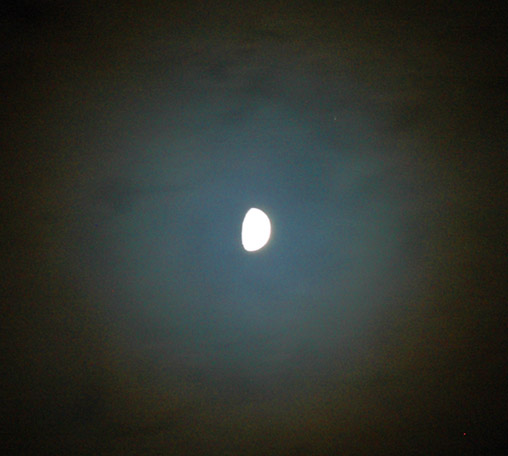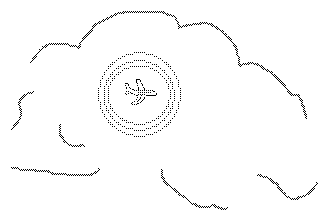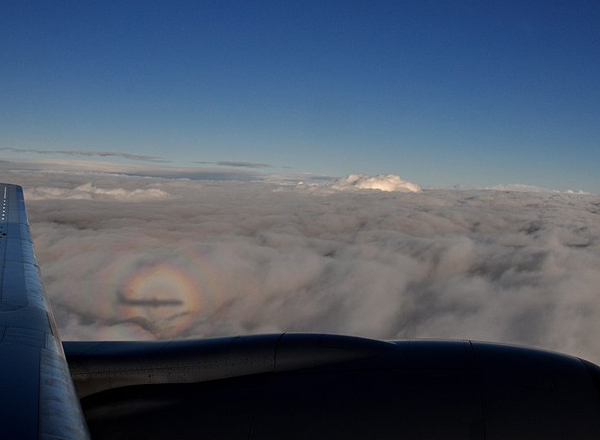Coronas
A circle of light quite distinct from the 22° halo can sometimes be seen around the sun or moon if there are thin clouds composed of water droplets or ice crystals of nearly uniform size. This circle is smaller, on the order of 10°, and is caused by diffraction of light by the small particles. The appearance is often that of alternating blue-green and red circles. The diffraction by a tiny opaque barrier shows the same pattern as that of an aperture of the same size and shape in an otherwise opaque screen (Babinet's principle).

The moon corona image above was taken on March 19, 2005 on a night when thin clouds were moving swiftly across the sky. The colors are subtle, but you can see a blue tint to the corona close to the moon and a reddening further out. This indicates diffraction in tiny water droplets. The shorter wavelength blue light produces diffraction maxima closer to the sun.
| What size droplet would it take to diffract light at 22°? |
Atmospheric optics concepts
| HyperPhysics***** Light and Vision | R Nave |



